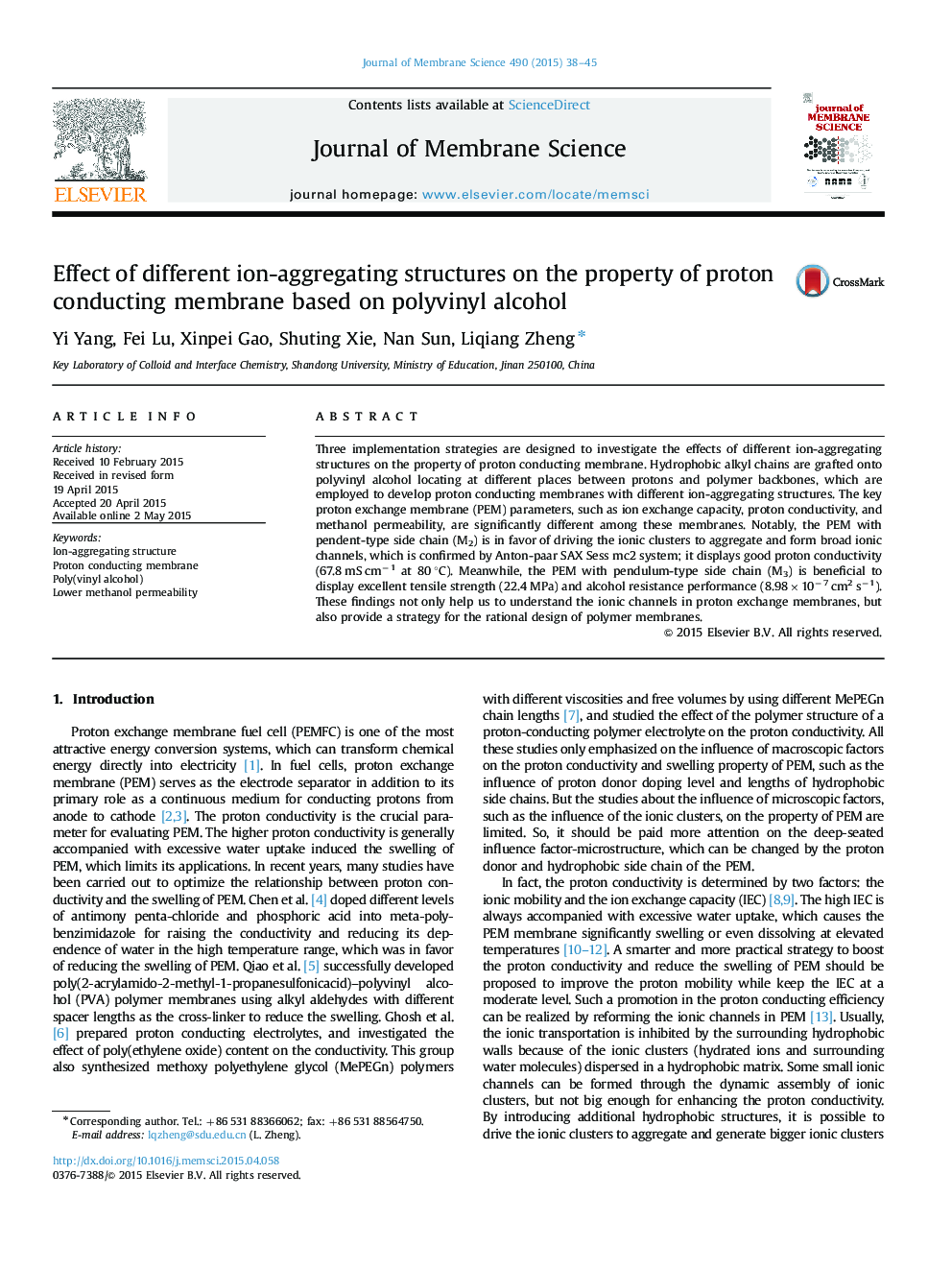| Article ID | Journal | Published Year | Pages | File Type |
|---|---|---|---|---|
| 633020 | Journal of Membrane Science | 2015 | 8 Pages |
Abstract
Three implementation strategies are designed to investigate the effects of different ion-aggregating structures on the property of proton conducting membrane. Hydrophobic alkyl chains are grafted onto polyvinyl alcohol locating at different places between protons and polymer backbones, which are employed to develop proton conducting membranes with different ion-aggregating structures. The key proton exchange membrane (PEM) parameters, such as ion exchange capacity, proton conductivity, and methanol permeability, are significantly different among these membranes. Notably, the PEM with pendent-type side chain (M2) is in favor of driving the ionic clusters to aggregate and form broad ionic channels, which is confirmed by Anton-paar SAX Sess mc2 system; it displays good proton conductivity (67.8 mS cmâ1 at 80 °C). Meanwhile, the PEM with pendulum-type side chain (M3) is beneficial to display excellent tensile strength (22.4 MPa) and alcohol resistance performance (8.98Ã10â7 cm2 sâ1). These findings not only help us to understand the ionic channels in proton exchange membranes, but also provide a strategy for the rational design of polymer membranes.
Related Topics
Physical Sciences and Engineering
Chemical Engineering
Filtration and Separation
Authors
Yi Yang, Fei Lu, Xinpei Gao, Shuting Xie, Nan Sun, Liqiang Zheng,
